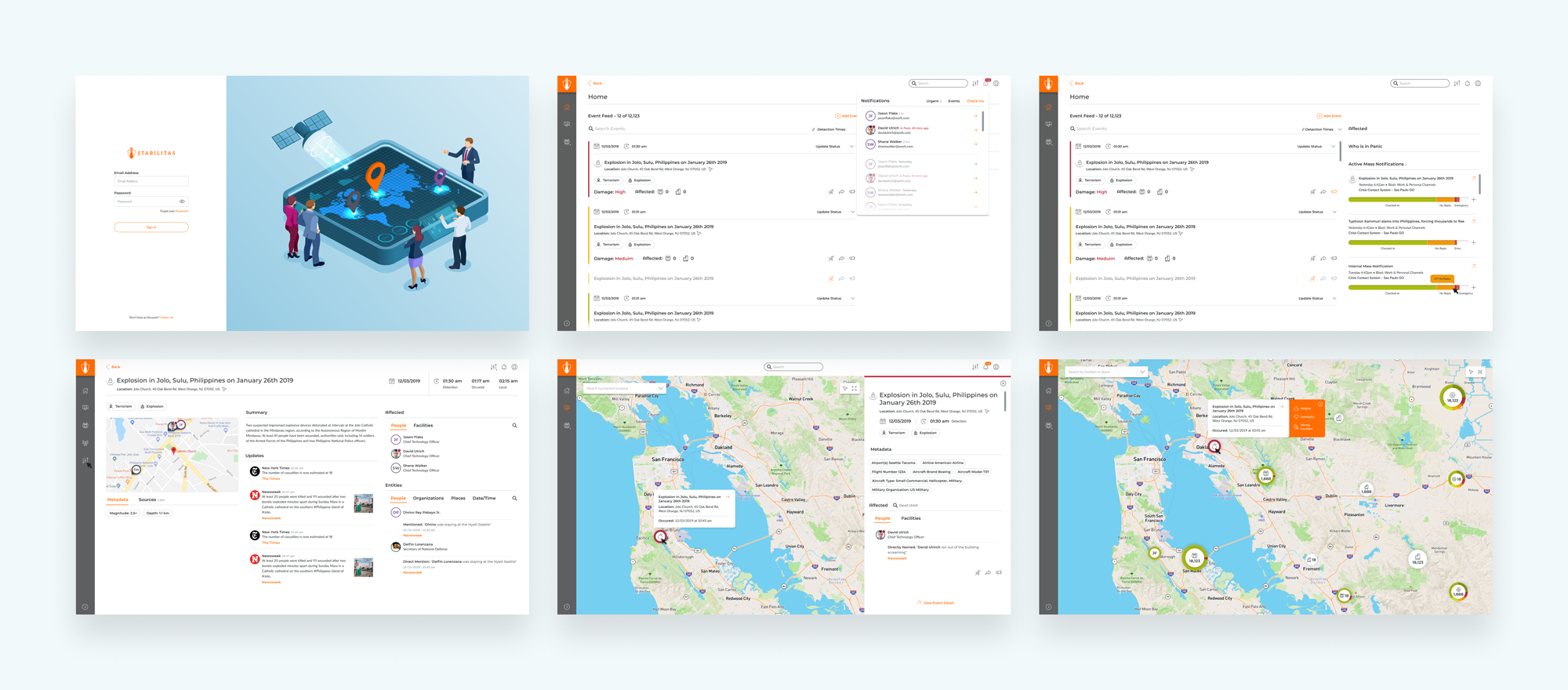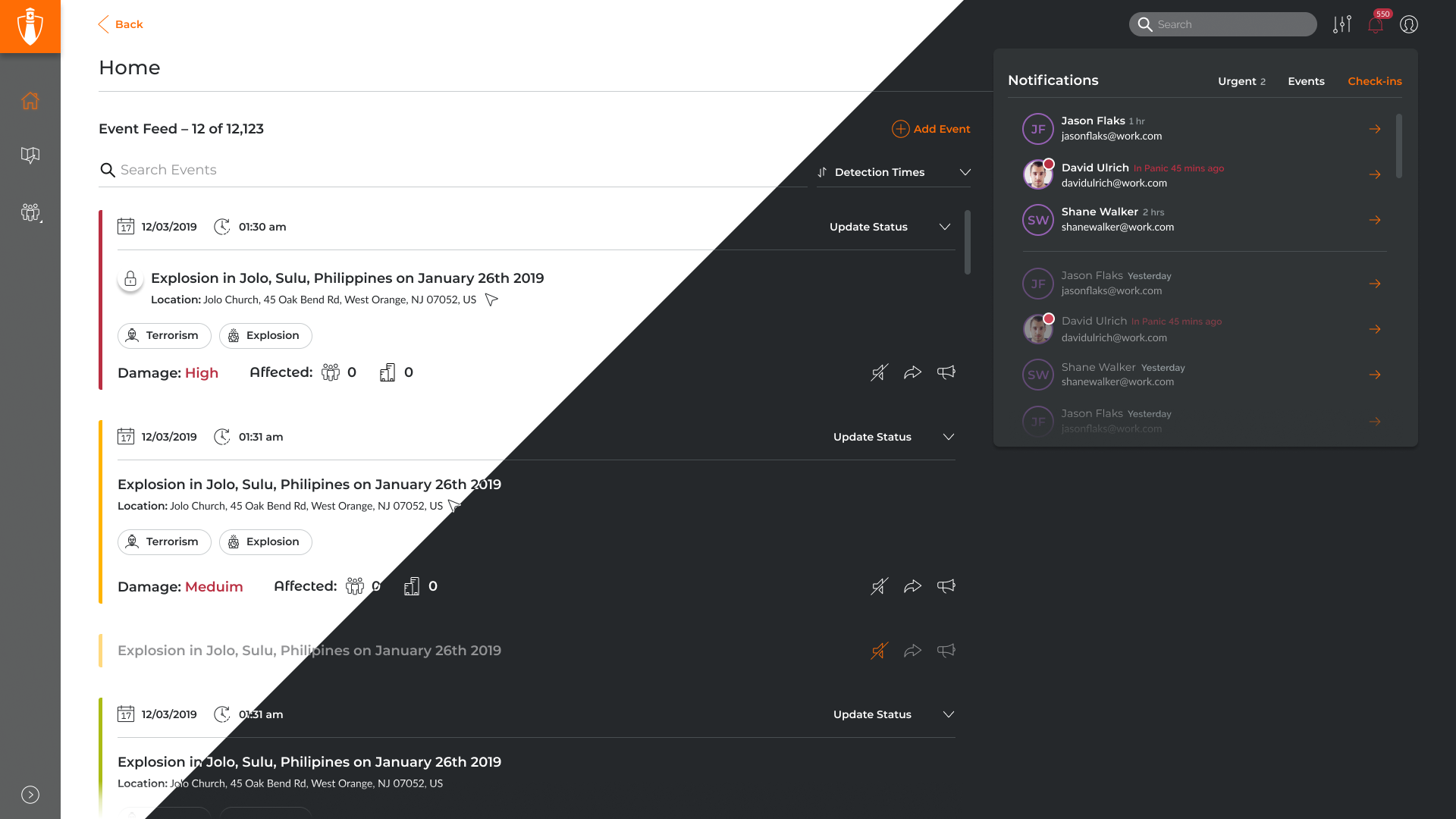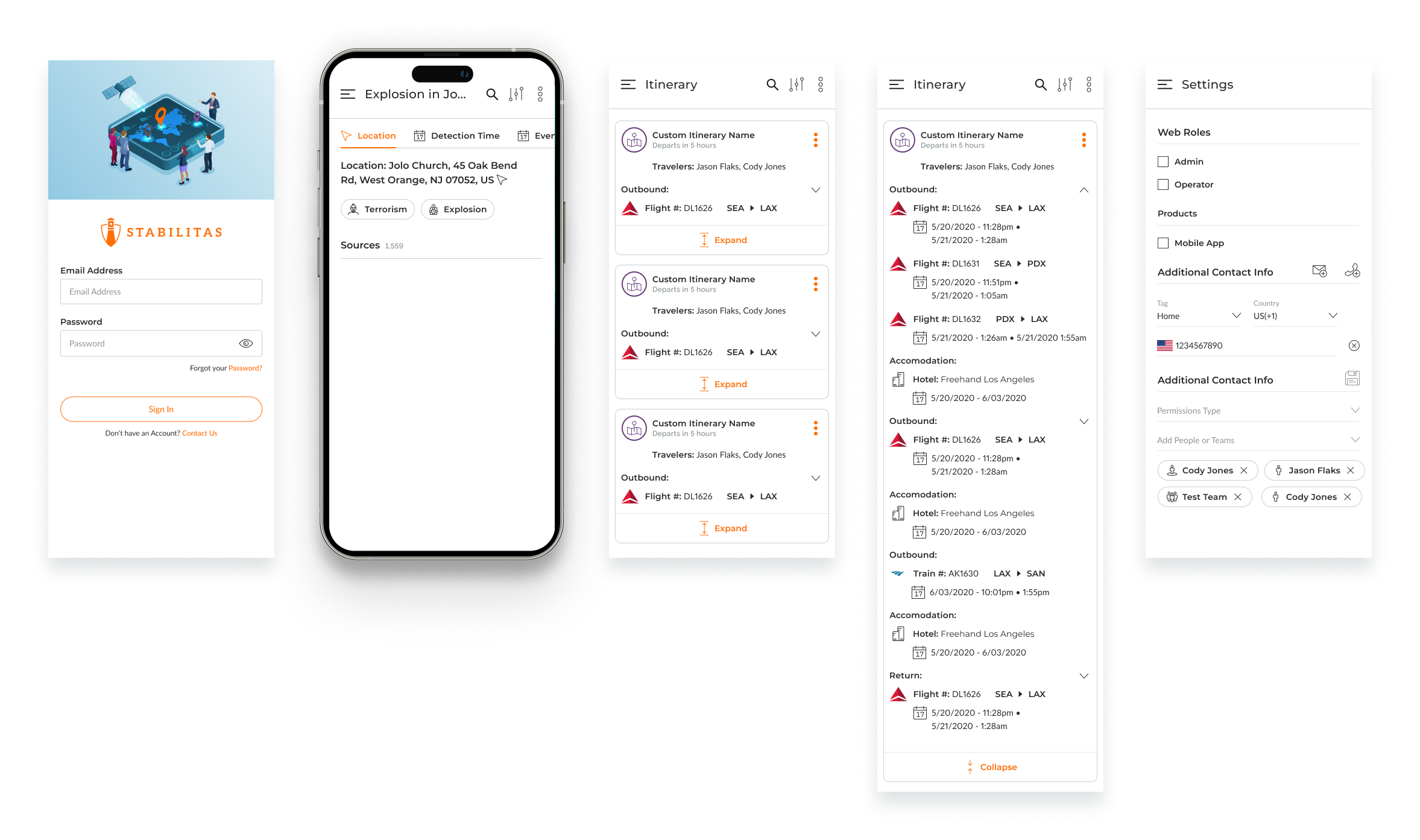
Stabilitas is a leading AI-driven intelligence platform designed to help organizations stay informed about critical events that could affect their operations, teams, and locations. However, their existing platform faced a major usability problem: a cluttered interface that made it difficult for users to quickly identify high-priority events among a sea of data. Users were missing key alerts, which led to delayed reactions during critical incidents.
The platform lacked a clear content hierarchy, causing critical information to be buried under less important alerts. This clutter not only slowed down decision-making but also increased user frustration during high-stress situations.
By applying the Jobs to be Done (JTBD) framework, I identified four core jobs that the platform needed to help users complete:
For Stabilitas, achieving these goals meant empowering users to respond more quickly and confidently to incidents, ultimately improving business performance and enhancing customer retention.

As the lead designer, I approached the problem by focusing on simplifying the interface and creating a clearer flow of information. Here’s how I addressed the core challenges:

The redesigned Stabilitas 2.0 platform successfully addressed the core usability issues, leading to a more intuitive and efficient user experience. The key outcomes were:

This project reinforced the importance of balancing simplicity with data depth. While it’s essential to prioritize key information, it’s equally important to allow users to access secondary data without feeling overwhelmed. I learned the value of real-time user testing and iteration to ensure that the final design met both user needs and business objectives.
In future projects, I would focus even more on integrating micro-interactions that further guide the user’s attention and reduce cognitive overload. Additionally, working closely with product teams early in the process ensures that the design is not just aesthetically pleasing but also strategically sound.
Stabilitas 2.0 is an AI-powered intelligence platform that offers comprehensive situational awareness and critical event management capabilities. The redesigned platform ensures that users can quickly identify, act on, and resolve critical incidents, helping organizations protect their teams and assets, no matter where they are in the world.
for founders & product teams
Get instant, unlimited product design—UX, UI, research, and AI flows—on a simple monthly plan. No hiring headaches. No delays. Just real results for your roadmap.
Perfect for B2B SaaS, AI, fintech, and more. Fix UX debt, ship faster, and make every release count.
Start now